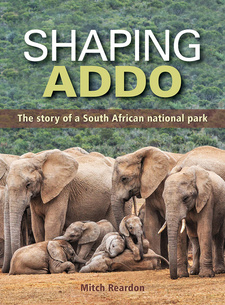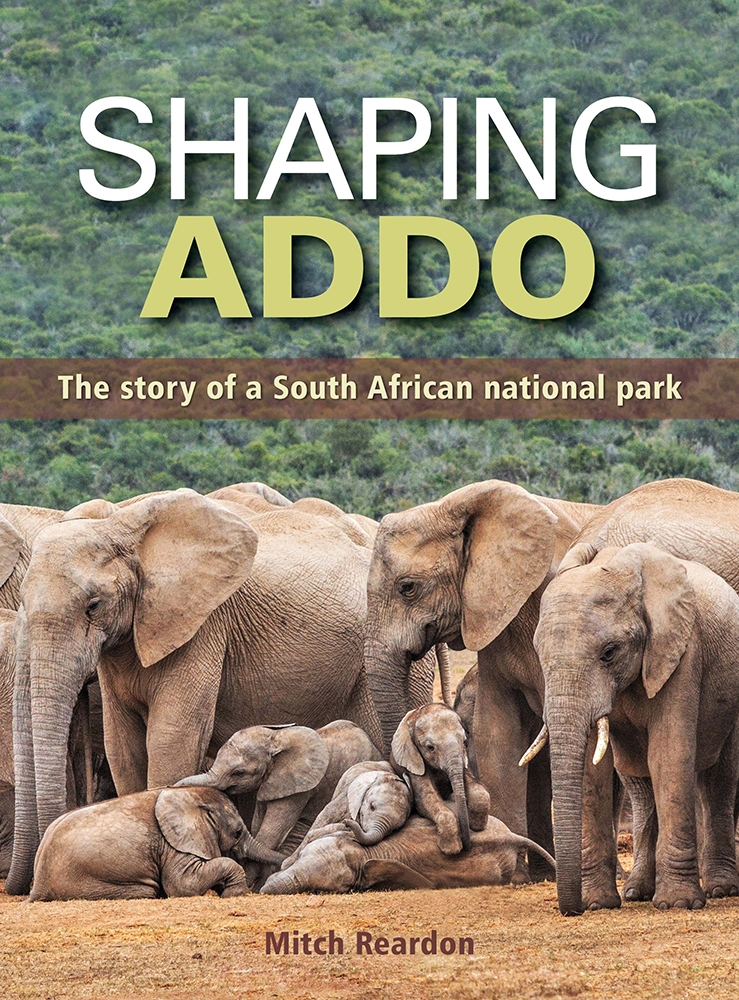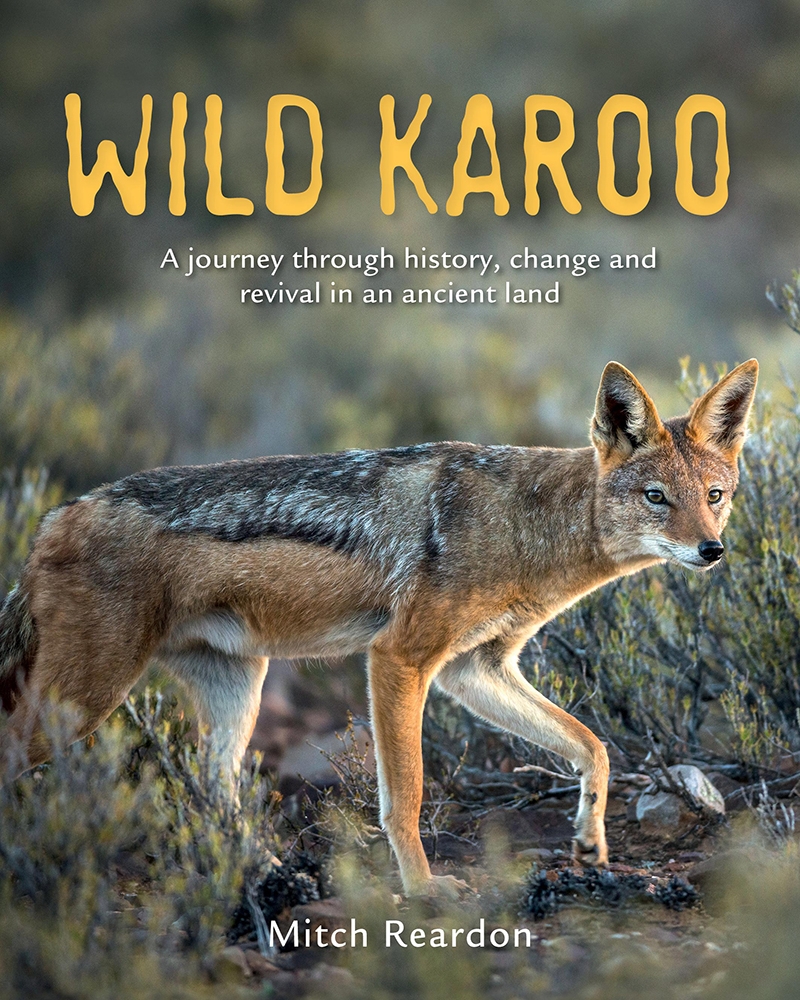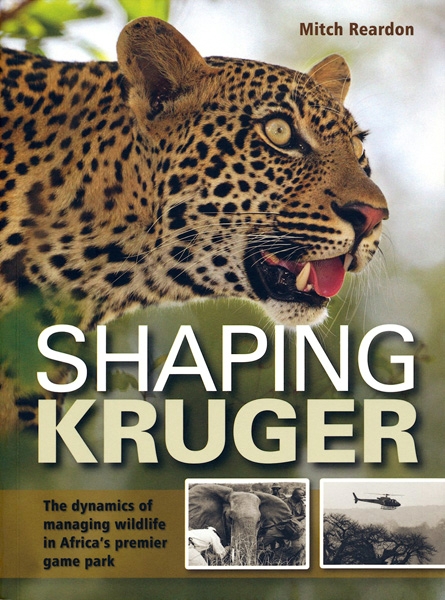Shaping Addo: The Story of a South African National Park, by Mitch Reardon

Shaping Addo: The Story of a South African National Park, by Mitch Reardon. Penguin Random House South Africa. Imprint: Struik Nature. Cape Town, South Africa 2021. ISBN 9781775846048 / ISBN 978-1-77-584604-8
Shaping Addo: The Story of a South African National Park by Mitch Reardon provides fascinating insight into the lives and habits of terrestrial and marine animals, examining individual species, the relationship between them, and the carefully crafted management strategies required to ensure the survival of all species.
I first visited Addo Elephant National Park in the early 1970s and to say the experience was underwhelming is something of an understatement. The only game drive available followed the outside of the park's perimeter fence. Visitors peered through the sturdy elephant-proof cables in the forlorn hope of spotting something in the impenetrable 4-m-high wall of vegetation on the other side. We completed the circuit without seeing a single mammal; it wasn't until we got back to the six-rondavel rest camp that we came upon a small breeding herd of elephants drinking at Nyathi Waterhole. At just 6,000 ha, Addo in those days was one of the smallest national parks in southern Africa. Although this was almost three times bigger than its original 2,270 ha when proclaimed in July 1931 to protect the Cape's last 16 free-ranging elephants, as a tourist destination it left a lot to be desired. How times have changed. Nowadays, Main Camp - much enlarged and gentrified - and Nyathi Waterhole still flourish, as do the descendants of those elephants. They now number over 650 - around 80 per cent of the park's large herbivore biomass - and represent the densest concentration of wild elephants anywhere in the world. In 1980 the giant pachyderms were considered sufficiently docile for tourist vehicles to drive inside the park, and the first visitors completed the 12-km circuit without incident. In the nearly 50 years since my first visit practically everything about Addo has expanded and changed beyond recognition. Sewn together from disparate pieces of conservation areas, farms and coastline, today's Addo has become a mega-park with a diversity of landscapes that stretch for 182,000 ha from the northern semi-arid Nama Karoo around Darlington Dam, south over the rugged Zuurberg mountain range, and on through the beautiful Sundays River Valley to where the Sundays River mouth meets the Indian Ocean. The park then turns east along the Algoa Bay shoreline for 65 km to the mouth of the Bushmans River near Kenton-on-Sea, taking in the towering dune fields and indigenous evergreen forests of the Woody Cape section. At its southern extremity, Addo goes offshore to include the high conservation status Bird and St Croix island groups that provide sanctuary to an immense breeding colony of nearly 200,000 Cape gannets, the planet's largest breeding colony of endangered African penguins, and Africa's easternmost Cape fur seal colony. In 2019, Addo's Marine Protected Area was greatly enlarged to 116,000 ha, including reefs, rocky shores and sandy beaches that stretched from Coega in the west to Cannon Rocks in the east. The new expansion made present-day Addo over 130 times bigger than its original size. It is now South Africa's third largest national park, after Kruger and the Kgalagadi Transfrontier Park. This mighty landscape is one of the most biologically diverse places on Earth. Spread across five of South Africa's seven biomes (distinct botanical communities), Addo has reached a size that makes its ecosystems sustainable and enables it to accommodate a wide diversity of ecological processes; this makes it the most ecologically diverse protected space in the country. 'Elephants are still the park's top attraction, with each one estimated to generate R1.5 million per annum in tourist revenue,' Addo's amiable head ranger, John Adendorff, told me recently as we drove towards new bomas near his Main Camp headquarters to check on valuable disease-free buffaloes held there until sold at auction. [...]
This is an excerpt from Shaping Addo: The Story of a South African National Park, by Mitch Reardon.
Title: Shaping Addo
Subtitle: The Story of a South African National Park
Authors: Mitch Reardon
Publisher: Penguin Random House South Africa
Imprint: Struik Nature
Cape Town, South Africa 2021
ISBN 9781775846048 / ISBN 978-1-77-584604-8
Softcover, 17 x 23 cm, 208 pages, throughout colour photos, 3 maps
Reardon, Mitch im Namibiana-Buchangebot
Shaping Addo: The Story of a South African National Park
Shaping Addo is an account of how a seemingly insignicant sanctuary was transformed into the successful Addo Elephant National Park.
Shaping Kruger: The Dynamics of Managing Wildlife in Africa's Premier Game Park
Shaping Kruger: The Dynamics of Managing Wildlife in Africa's Premier Game Park provides fascinating insight into the lives, habits and behaviour of the larger animals that significantly affect the workings of the park.



